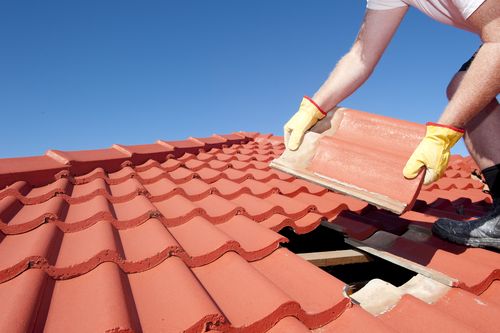Concrete roof tiles have been a popular roofing choice for centuries, and their appeal continues to grow. Known for their durability, versatility, and aesthetic appeal, concrete roof tiles offer a practical and stylish solution for homeowners and builders alike. This article delves into everything you need to know about concrete roof tiles, from their benefits and types to installation and maintenance.
Benefits of Concrete Roof Tiles
Durability and Longevity
Concrete roof tiles are renowned for their exceptional durability. They can withstand harsh weather conditions, including heavy rain, strong winds, and hail. Properly installed and maintained, concrete roof tiles can last 50 years or more, making them a long-term investment for homeowners.
Versatility in Design
Concrete roof tiles come in a wide variety of shapes, colors, and textures, allowing homeowners to achieve the desired aesthetic for their home. Whether you prefer the classic look of traditional clay tiles or the sleek appearance of modern flat tiles, concrete tiles can be customized to suit any architectural style.
Energy Efficiency
Concrete roof tiles have excellent thermal properties, helping to regulate indoor temperatures. They provide a layer of insulation, keeping homes cooler in the summer and warmer in the winter. This energy efficiency can lead to reduced heating and cooling costs over time.
Low Maintenance
Compared to other roofing materials, concrete roof tiles require minimal maintenance. They are resistant to rot, insect damage, and fire. Occasional cleaning to remove debris and moss is usually sufficient to keep them in good condition.
Environmental Benefits
Concrete roof tiles are made from natural materials, including sand, cement, and water, making them an eco-friendly roofing option. They are also recyclable, reducing the environmental impact at the end of their life cycle.
Types of Concrete Roof Tiles
Standard Weight Tiles
Standard weight concrete tiles are the most common type and are suitable for most residential roofing applications. They provide excellent durability and are available in various profiles, including flat, low-profile, and high-profile designs.
Lightweight Tiles
Lightweight concrete tiles are designed for roofs that may not support the weight of standard tiles. They offer similar benefits in terms of durability and aesthetics but are approximately 40% lighter, reducing the load on the roof structure.
Interlocking Tiles
Interlocking concrete tiles feature a unique design that allows them to fit together seamlessly. This interlocking mechanism provides additional stability and can enhance the roof’s resistance to wind and water penetration.
Flat Tiles
Flat concrete tiles offer a sleek, modern appearance and are often used in contemporary architectural designs. They can be installed in various patterns, including straight or staggered, to achieve different visual effects.
Installation of Concrete Roof Tiles
Preparation
Proper preparation is crucial for the successful installation of concrete roof tiles. The roof structure must be assessed to ensure it can support the weight of the tiles. Underlayment and flashing should be installed to provide additional protection against water infiltration.
Laying the Tiles
Concrete roof tiles are typically installed starting from the bottom edge of the roof and working upwards. Each tile is secured with nails or clips, and care is taken to ensure they are aligned correctly. The interlocking design of some tiles makes the installation process more straightforward and provides added stability.
Cutting and Fitting
Some tiles may need to be cut to fit around roof features such as chimneys, vents, and valleys. This requires precision to maintain the roof’s integrity and aesthetic appeal. Specialized tools are used to make clean, accurate cuts.
Finishing Touches
Once all the tiles are in place, ridge and hip tiles are installed to cover the roof’s peaks and edges. These tiles are often mortared in place to ensure a secure fit. Finally, a thorough inspection is conducted to check for any gaps or loose tiles.
Maintenance of Concrete Roof Tiles
Regular Inspections
Routine inspections are essential to identify any potential issues before they become significant problems. Look for cracked or broken tiles, loose fittings, and signs of moss or algae growth.
Cleaning
Periodic cleaning helps maintain the appearance and functionality of concrete roof tiles. Use a gentle detergent and water to remove dirt and debris. Avoid using high-pressure washers, as they can damage the tiles.
Repairs
Promptly replace any damaged or missing tiles to prevent water infiltration and structural damage. It’s advisable to hire a professional roofer for repairs to ensure the work is done correctly.
Preventive Measures
Trim overhanging tree branches to reduce debris accumulation on the roof and minimize the risk of damage from falling limbs. Ensure gutters and downspouts are clear to facilitate proper drainage and prevent water buildup.
Conclusion
Concrete roof tiles offer a combination of durability, aesthetic versatility, and energy efficiency that makes them an excellent choice for residential and commercial roofing projects. With proper installation and maintenance, they can provide reliable protection and enhance the beauty of any building for decades. Whether you’re building a new home or renovating an existing one, concrete roof tiles are worth considering for their long-lasting benefits and timeless appeal.

